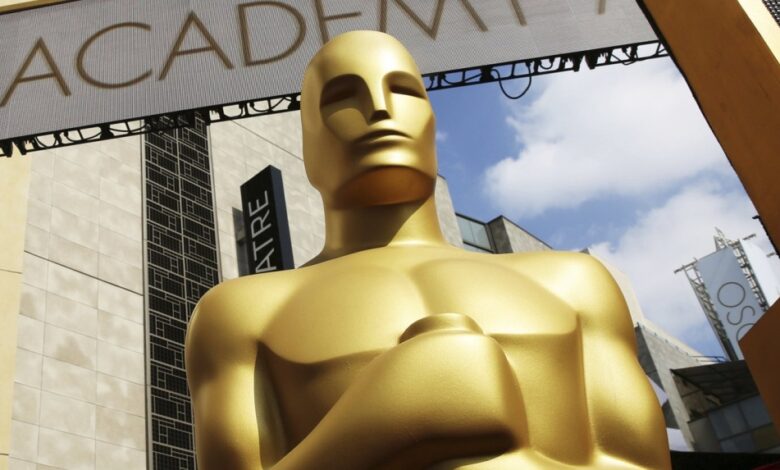Oscar best picture rules change, more time in theaters

The theatrical requirements for films competing for the Oscars top prize are getting a little stricter.
Beginning with the 97th Academy Awards in 2025, those seeking the best picture will need to spend more time in theaters to qualify for the film’s top prize. The changes, announced by the Academy of Motion Picture Arts and Sciences come this week after three years of adjusted release standards due to the pandemic.
On top of the current week-long “qualifying run” in one of six US cities – New York, Los Angeles, Chicago, Atlanta, San Francisco or Miami – the best picture contenders would now also have to play an additional seven days in 10 of the top 50 US markets. In addition, there are several other new rules about when the films should be shown in theaters.
“We hope that this expanded theatrical footprint will increase the visibility of films worldwide and encourage audiences to experience our art form in a theatrical setting,” said Bill Kramer, CEO of the Academy, and Janet Yang, President of the Academy. a statement.
It’s part a gesture to theaters still grappling with the pandemic, part for audiences in markets outside of New York and Los Angeles who don’t always get theatrical access to best picture contenders, and part a statement to entrenched streaming services where theaters play a vital role. importance to remain. Hollywood’s top prize.
The film academy leaders also say the decision came from many conversations with industry partners and they feel this “evolution will benefit film artists and film enthusiasts alike.”
But some in the industry wondered what it really changes, who benefits and who it might harm.
Michael O’Leary, the president and CEO of the National Association of Theater Owners, applauded the “significant initiative”. In a statement, O’Leary said it “confirms that theatrical exhibitions are the cornerstone of the industry.”
For traditional studios, from the big ones like Warner Bros., Universal, and Disney, to the smaller players, like A24 and Neon, behind recent best picture winners “Everywhere All At Once” and “Parasite,” it probably has little impact. .
For streaming services, it may be a case-by-case adjustment depending on the company, but not a hurdle. Amazon already plans to release 12 to 15 movies in theaters each year, as they already did with Ben Affleck’s “Air.” Apple also plans to spend $1 billion a year on movies that hit theaters before streaming, including Ridley Scott’s “Napoleon.”
Netflix has also had a larger theatrical footprint of late. Not only do they control two American theaters — the Paris Theater in New York and the American Cinematheque in Los Angeles — but they’ve also historically given theatrical runs to their award hopefuls. All of Netflix’s nominees since “Roma” have met the requirement. The most recent Best Picture nominee, “All Quiet on the Western Front,” played in hundreds of theaters.
However, the new rule may eliminate the possibility of a grassroots campaign on behalf of a very small film. Independent theaters and theaters willing to run independent films have become rarer and competition is fierce for those screens in major markets. Some of the bigger indie stalwarts are even scheduling big studio movies, reducing times and screens available for true independents.
Like the diversity requirements that came into effect this year, few players of recent times could come up with the best shots that would not have passed this threshold. The winner of Apple’s Best Picture “CODA” played in about 40 theaters. Even non-traditional Oscar “underdogs” like “Drive My Car” and “RRR” had substantial theatrical runs.
“It’s important to remember that qualification is just the first step in a long process that involves robust and costly campaigns,” said Dan Berger, president of independent film company Oscilloscope. “I think it’s fair to say that almost any film that falls short of these parameters has never stood a chance in a race for best picture anyway.”
Berger added, “Hopefully the result of this isn’t a more robust and expensive campaign that just serves to further separate merit-based outcomes from campaign-based outcomes.”
There are many unknowns about the specifics of the expansion, including whether there will be minimum showtimes and screens. Can companies just rent out eight screens that play to little or no audience in densely populated areas that are relatively cheap and also historically not great for indie films? It will tick the box, but will it help the theatres, the movies or the public? And will it lead to an even bigger bottleneck of releases at the end of the year?
Questions also remain about how this will affect the eligibility of animated films and documentaries, which would not have to meet these requirements to qualify in their individual categories, but may now have to follow a different strategy to qualify for the best movie.
Others are more hopeful, knowing that the academy’s board of directors often meets to reassess rules as the landscape continues to change.
“It’s about time the academy took a step back to focusing on theater. The Oscars were getting closer and closer to becoming the Emmys,” said a top award strategist and academy member who asked for anonymity to speak candidly about the changes. ‘Could they have gone on? Naturally. But it’s a good step in the right direction.’




